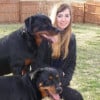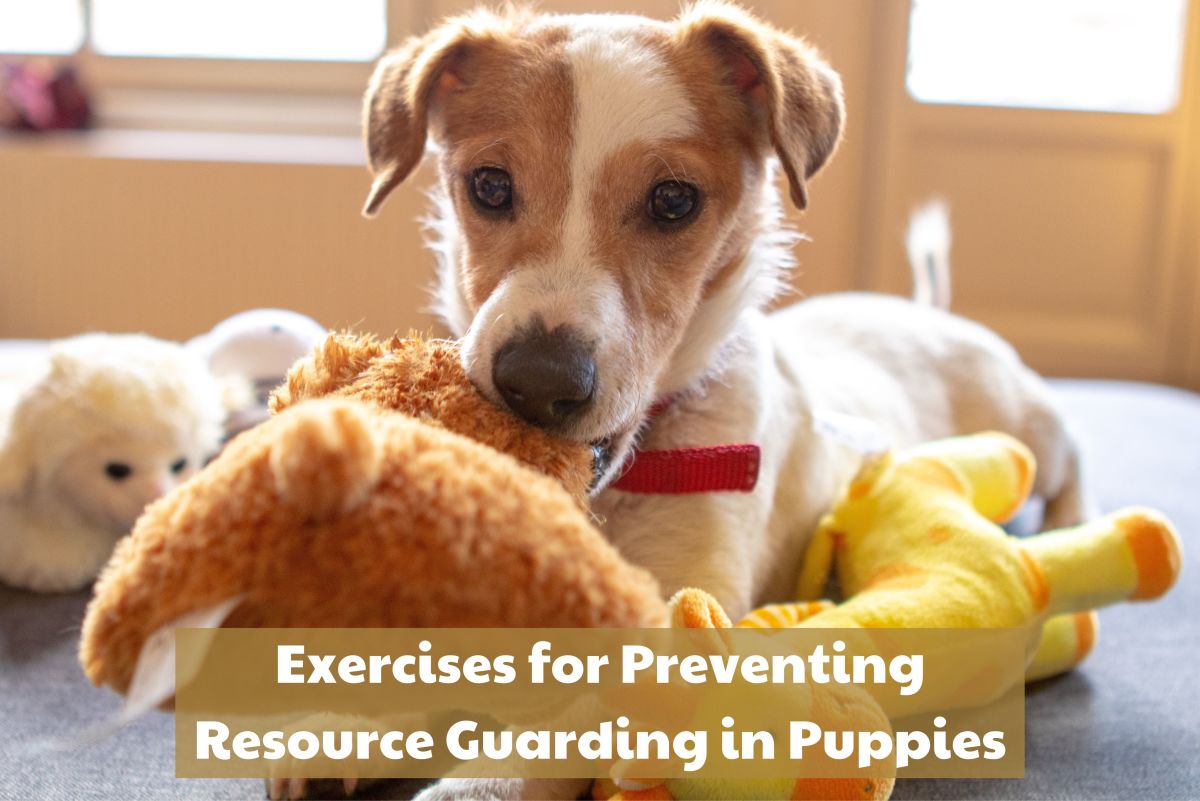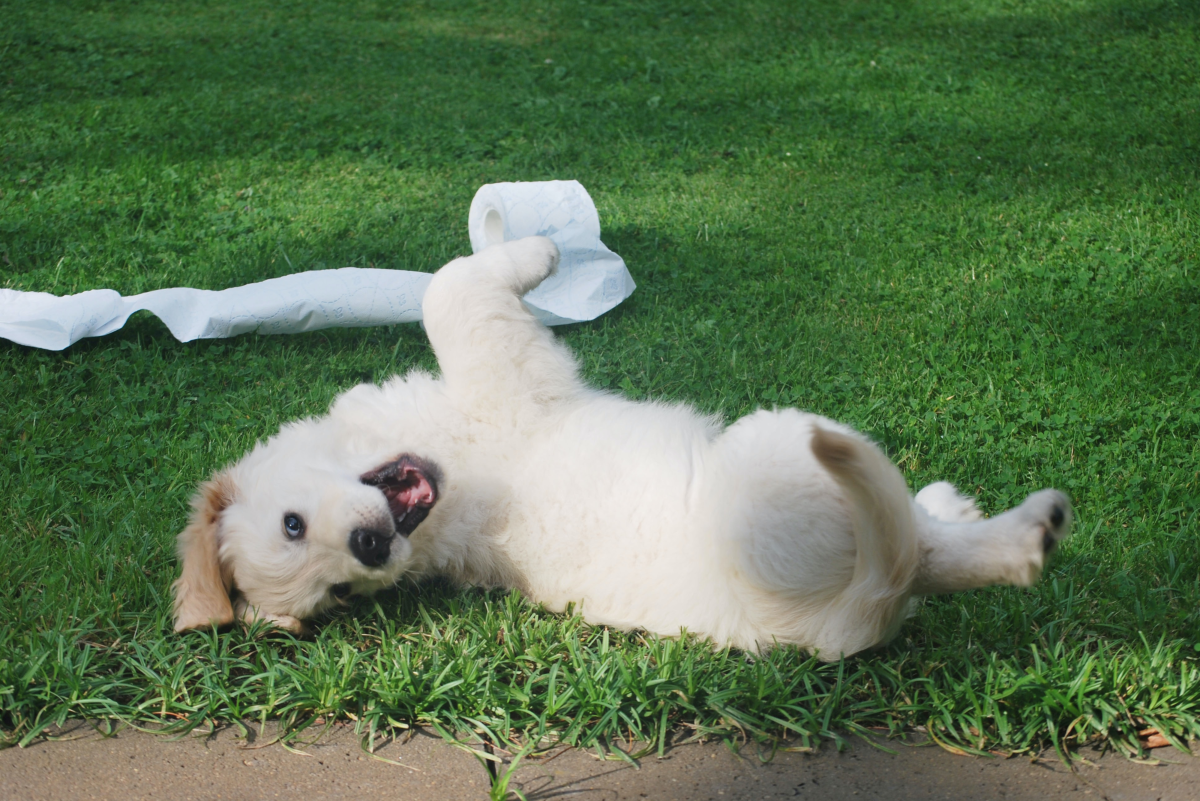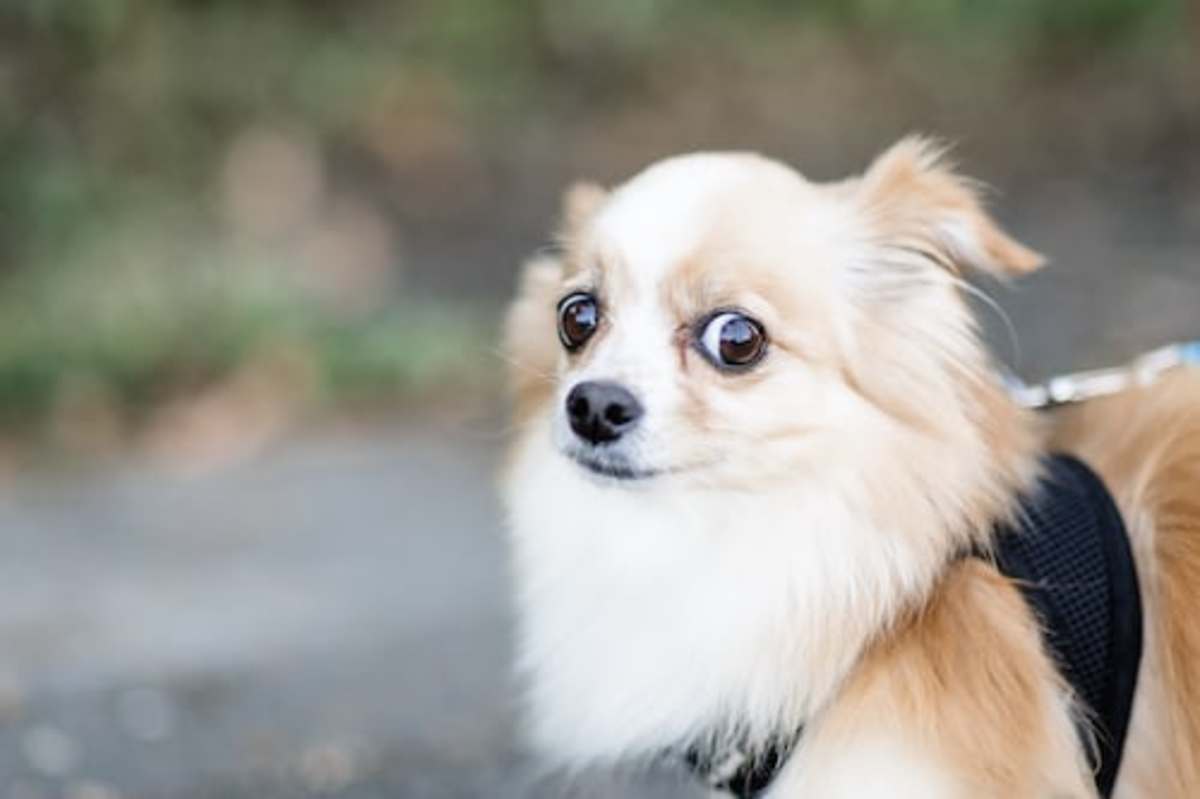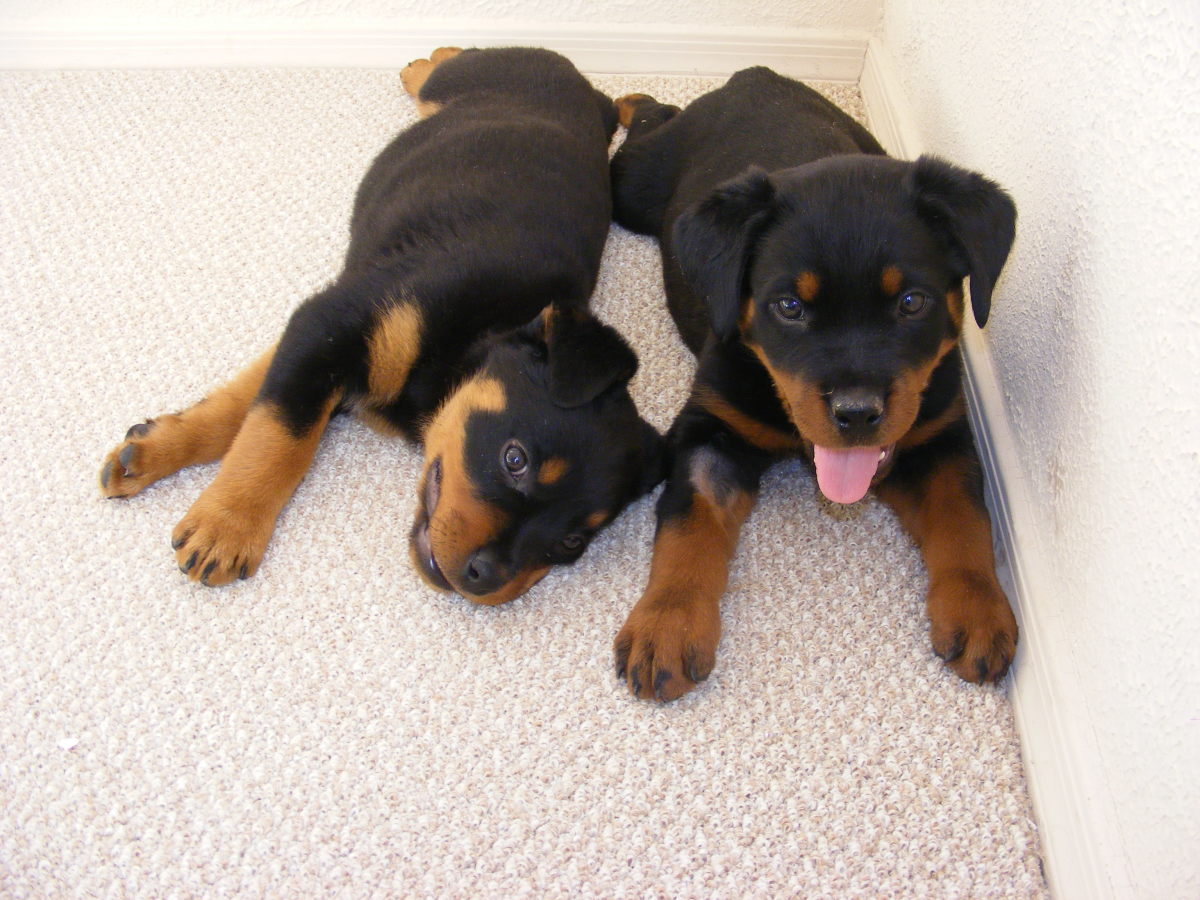How To Stop My Puppy From Guarding the Water Bowl? (Psychogenic Polydipsia)
Is your Puppy Guarding the Water Bowl?
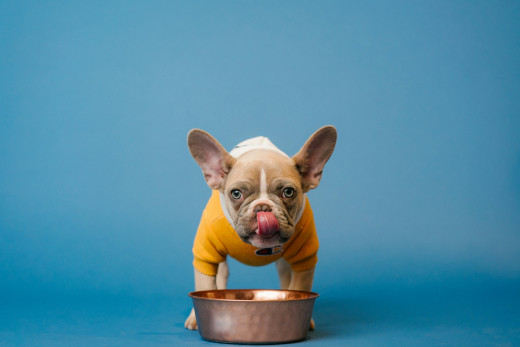
Help, My Puppy is Guarding the Water Bowl!
If your puppy is guarding the water bowl, you are likely concerned about this behavior and are wondering what to do about it.
The issue of a puppy guarding the water bowl, is after all multi-faceted. On top of guarding the water bowl from any person or pet that is approaching, affected puppies will also guzzle water like there's no tomorrow which can ultimately lead to accidents around the house.
I witnessed this problem firsthand with a Border Collie mix puppy I boarded and trained. She would repeatedly 'herd' other dogs away from the water bowl during play sessions.
Signs Your Puppy is Guarding the Water Bowl
You may likely know the clear signs, but there may also be several more subtle ones that aren't as straightforward and easy to recognize.
Most of these signs are ways of telling a person or pet to stay away from the water bowl. These are distance-increasing signs, meaning the dog asks for more distance. In other words, wants people or other pets to "go away."
The more people and pets ignore these requests, the more clear these signals becomes, prompting the dog to intensify them and even bite. Caution is therefore needed with dogs who engage in resource guarding behaviors.
Following are several signs of puppies guarding the water bowl.
- Rushing towards the water bowl when somebody walks by there (so to get there first)
- Drinking water quickly
- Finishing water in the bowl even if not thirsty (the goal is to prevent others from accessing it)
- Cutting off/getting in between any person or pet getting close to the bowl
- Drinking while another dog drinks and trying to push the other way.
- Rushing towards the water bowl when another dog drinks
- Tensing up when close to the water bowl/drinking
- Hunkering over the water bowl
- Growling
- Snarling (showing teeth)
- Lunging
- Attacking people other pets getting close to the bowl
If you notice these signs, it's important to therefore practice caution. Ignoring the most subtle signs can lead to intensification and potentially an aggressive response.
Why is My Puppy Guarding the Water Bowl?
There are several potential reasons why a puppy may guard the water bowl. Several underlying causes may have a medical component, and therefore, it's important to see a vet first before assuming that the issue is behavioral.
Psychogenic Polydipsia in Dogs (A Diagnosis of Exclusion)
You have never heard about this term, but if your dog is drinking excessively to the point of obsessing about it, it's good to get familiar with it.
The term psychogenic refers to a condition having a psychological origin rather than a physical one, while polydipsia is the medical term for increased drinking. Add these two words together and you'll get something along the terms of compulsive drinking in dogs, basically, a dog's mental quirk which makes a dog think he is always thirsty.
Psychogenic polydipsia in dogs is a diagnosis of exclusion. What this means is that, you want your vet to first check off the list any potential medical causes, before coming to the conclusion that the issue is behavioral.
This is important because, should one assume the issue to be behavioral, behavior modification would fail, in the meanwhile leaving a medical disorder untreated with all its potential negative consequences.
Below is a list of several medical causes that are known to cause increased drinking in dogs. Of course, this list is not diagnostic, it's just to show how several medical conditions may be a culprit and the importance of ruling these out.
Medical Causes of Increased Drinking in Dogs
Sometimes, medical problems are the root cause. Some conditions may cause dogs to perceive water as extra valuable and this may prompt guarding behaviors.
Following are several medical causes of increased drinking in dogs that your vet may want to rule out. This list is not comprehensive, and therefore, your vet will likely carry out other tests/exams to rule out other medical disorders.
Diabetes Insipidus
Diabetic insipidus is a rare condition caused by a deficiency of antidiuretic hormone (ADH). This hormone is responsible for regulating water conservation and balance.
Symptoms of this condition include excessive thirst, frequent urination, diluted urine, and an abnormally low concentration of urine.
Although diabetes is more common in older pets, it can sometimes occur as well in younger dogs.
Kidney Disease
Early kidney disease can cause increased drinking and urination in dogs. Basically, what may happen here is that the kidney is prevented from concentrating urine as it's supposed though, causing the dog to drink more as a way to compensate.
In a puppy, the underlying cause can be an anatomical or congenital defect of the kidney. Although not very common, it's something a vet may want to rule out through imaging (Xray, or better, ultrasound).
Cushing's Disease
Cushing's disease is mostly seen in dogs who are 7 to 12 years old, but it can be seen in dogs of any age, although it is rare in puppies.
Medications
Some medications are known for causing increased drinking as a side effect.
For instance, steroids (like prednisone) are notorious for causing increased drinking and increased urination in dogs (along with increased appetite).
Other thirst-inducing medications include diuretics, such as Furosemide (also known as "water pill") and dog seizure medications such as phenobarbital.
High Sodium Diets
Sometimes, the diet is to blame. Some types of kibble or treats contain loads of sodium.
A snowball effect may be triggered by a dog being fed a diet high in sodium and given peanut butter daily (which contains loads of sodium too) and treats rich in sodium.
Other Factors
Increased drinking may obviously also take place in the following scenarios:
- When temperatures and level of humidity are high
- When puppies have been very active
- When puppies are very anxious
- When puppies are running a fever
How Much Drinking is Too Much?
Upon seeing the vet for this problem, it's important to give the vet an accurate measure of how much your puppy really drinks. Just telling the vet "my puppy drinks and pees a whole lot" is too vague for them to grasp the idea.
Most puppies drink and pee a lot normally so they hear that too often. An actual figure can help a lot.
How Much Should a Dog Drink a Day?
If you say she drinks a gallon per day, that is an objective measure and they can decide if that is high, low, or normal.
In general, dogs are expected to drink anywhere between 1-2 ounces per pound of body weight per day.
For example, a beagle weighing 30 pounds is expected to drink 30 to 60 ounces a day, which is 4 to 7 and a 1/2 cups of water per day, explains veterinarian Dr. Kara.
A dog is considered having true polydipsia when he or she is drinking more then 2 ounces per pound of body weight in a 24 hour period without an obvious reasons such as very hot temperatures or excess exercise.
"Testing the Waters"
To know how much your puppy really drinks, you will have to do a 24 hour water intake test. This would consist of keeping your puppy under close observation for 24 hours (separated from your other dogs), giving him free access to water (making sure he doesn't gain it from anywhere else e.g. toilets, puddles etc.) and measuring his exact intake of water.
Whatever is not lapped up in the 24 hours will need to be deducted from the amount you have measured when pouring it into the water bowl.
Your vet may have stricter guidelines though, so he may have you repeat the test, or even better, give the vet a call prior and see what guidelines he or she has so to follow them correctly. Some vets have handouts with clear instructions.
Should Your Restrict Your Dog's Water Intake?
It may be tempting to restrict your pup's water intake if he's drinking a whole lot and consequently peeing a lot.
However, this is not a safe practice. There may be chances that your puppy may be suffering from an underlying medical condition triggering excess thirst and consequently an excess volume of urine is being produced.
In this case, the increased drinking may be an important compensatory mechanism to the large volume of urine being produced.
On top of this, we must consider that, in a dog who guards water, restriction to it risks making it more salient, and therefore, more valuable, which risks increasing the dog's guarding behavior over it.
Behavioral Causes of Excessive Drinking in Puppies
Once medical causes have been ruled out, the issue is then considered to be potentially behavioral. Following are several possible behavioral causes of excessive drinking in puppies.
Just Being a Puppy
Puppies may have fun playing with water and drinking from the bowl may become a fun game. Many puppy owners report their pups drinking up water immediately upon filling up their bowl.
Some pups remain this way until 5, 6 or 7 months old, when they start learning more about moderation and finally slow down as they find other interesting things to do.
Short Attention Spans
In some cases, a pup's crazy drinking has to a do with a pup's short attention span and being easily distracted.
Just like kids, they get distracted and by the time they realize they're thirsty, they'll be dehydrated, so they'll drink the whole bowl in one go.
A Matter of Stress
One possible behavioral reason for a puppy drinking excess water is having a history of recently coming from a shelter.
The shelter can be a stressful environment, and increased drinking may be a coping mechanism.
Lack of Enrichment
Pups who are bored and without nothing more interesting to do, may fall onto obsessing over water. Adding more variety into their lives through training, brain games, play, walks etc can help.
A Matter of Being Hyper
Puppies who are very hyper will often feel thirsty and therefore water becomes more salient and worthy of guarding, especially when there are other puppies and the water isn't replenished in a timely matter.
History of Deprivation
This can happen when puppies weren't provided water as often as needed, when water is restricted and when breeders raise large litters with only one shared bowl and the bowl isn't quickly replenished.
Bullying Behavior
Some puppies can simply be bullies and may block other pups from gaining access to certain resources, even if they aren't thirsty.

How to Stop My Puppy From Guarding the Water Bowl?
After having your puppy evaluated by a vet and ensuring there are no medical/congenital issues at play, then the issue can be considered to be behavioral. So the below tips are only for cases where the vet has excluded medical causes and the issue therefore remains behavioral.
Leave Water Free Choice
While it may be tempting to restrict water, especially when the puppy has accidents around the house from over drinking, this practice can backfire because it convinces the pup that water is scarce and therefore becomes more valuable.
Move The Water to a New Location
It can help help to move the water bowl to a new location, so to create a new clean slate and hope that the behavior doesn't generalize to the new location.
Avoid The Corners
Sometimes, when water bowls are placed in a corner, a dog may feel threatened from other dogs approaching from behind to go drink too, and this can cause defensive behaviors.
Add Extra Water Bowls
This may work in some cases, but not in others. The risk is some dogs may get more preoccupied if there are more things to guard, but in some cases, the more, the better.
You will therefore have to do a trial and carefully assess whether the behavior is getting better or not with this type of intervention.
The goal here is that, with the extra bowls, the guarding puppy will finally get to relax knowing that there is always a good supply of water.
Replenish Quickly
Make sure to replenish water quickly as soon as a water bowl becomes empty. This helps the pup learn to relax knowing that there is always supply.
Try a Water Fountain
If you're tired of continuously filling up the water bowl, you can try a water fountain.
With the water always flowing, the pup should learn that supply is never ending and there's no reason to guard.
Again, you will have to do a trial, if your pup loves the fountain too much and he decides to lie next to it to keep other dogs away, that's a no go!
Try Counterconditioning
This is a behavior modification method that aims to create positive conditioned emotional response to other dogs/people approaching the water bowl.
Basically, condition your puppy to respond to a smacking sound or a "leave it" cue and practice this with the pup away from the other dogs in an area free of distractions to the level of high proficiency.
Once this training is pat down you would make the smacking sound/say leave it and feed a handful of treats, one by one, every time another dog goes to drink/shows an intent to drink.
It's important to intervene *before* your puppy has a chance to rehearse the problematic guarding behavior.
You may need to start this with your pup on leash at a distance from the bowl initially, then once you have a reliable response, practice off leash.
Repeat several times so that the positive association between other dogs drinking and getting a treat, becomes strong.
With several repetitions, your pup may start looking at you in anticipation for the treat, rather than feeling stressed and threatened by the other dog.
Teach Impulse Control
These exercises won't stop the behavior directly, but will teach your pup/pups that that being calm and patient is rewarding. Here are several: 10 impulse control games for dogs.
This article is accurate and true to the best of the author’s knowledge. It is not meant to substitute for diagnosis, prognosis, treatment, prescription, or formal and individualized advice from a veterinary medical professional. Animals exhibiting signs and symptoms of distress should be seen by a veterinarian immediately.
© 2025 Adrienne Farricelli CPDT-KA, Dip.CBST
